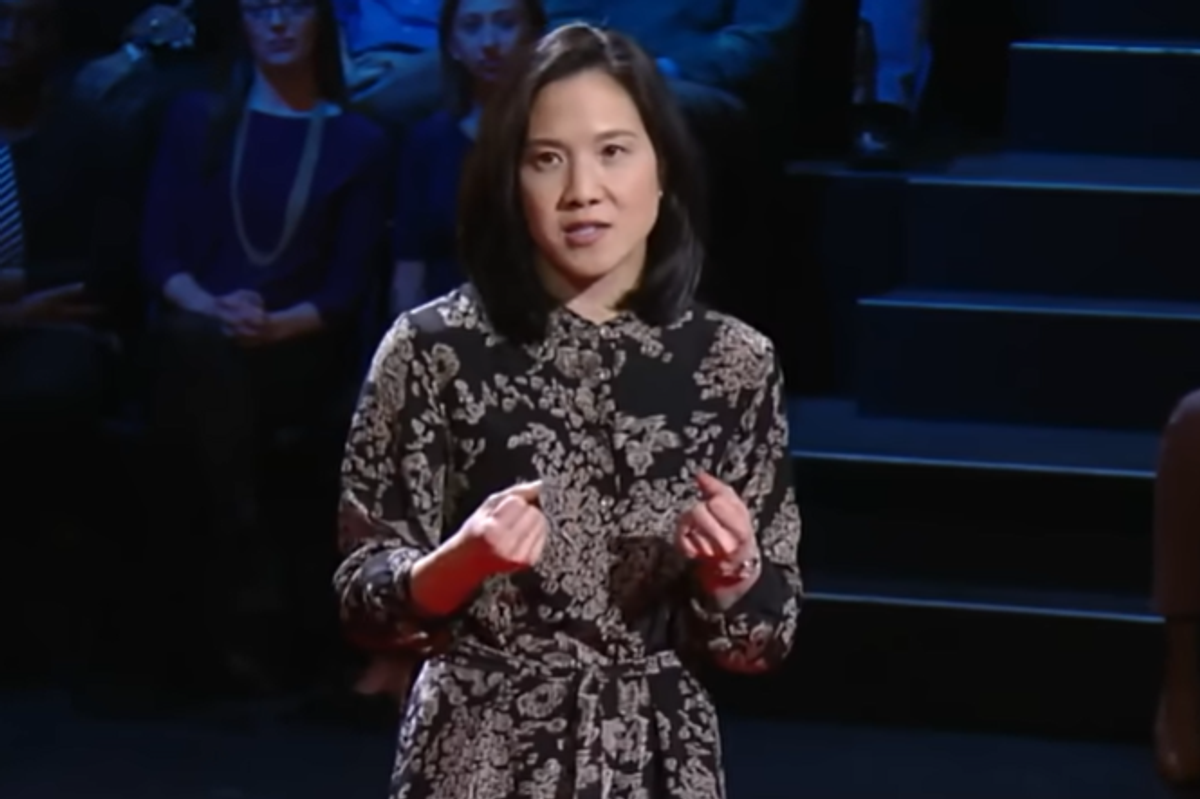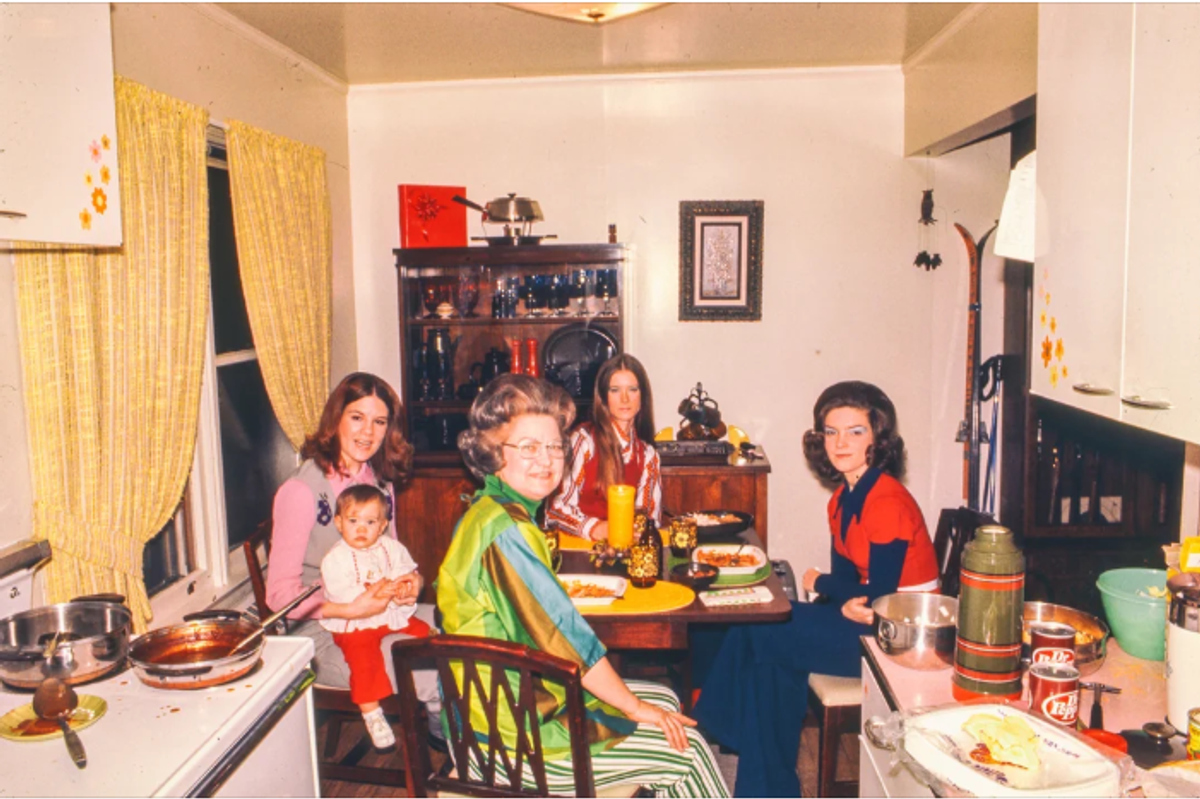It's that time of year again for one of Upworthy's favorite traditions: sharing with you the finalists for the Nikon Comedy Wildlife Awards.
The 2025 competition received over 10,000 "brilliant and hilarious" entries from 108 countries and has been whittled down to 40 finalists, which include a smoking duck, a prancing gorilla, and some wrestling green frogs. The photographers are competing for the top prize—an incredible one-week safari in Kenya's Masai Mara National Reserve. Other prizes include Nikon Z6 III and Nikon Z50 II cameras.
“We had an awesome year last year and are absolutely delighted to be able to partner with the Nikon team again for 2025," Tom Sullam, Comedy Wildlife Competition co-founder, said in a statement. "Their ongoing support has supercharged the competition, reaching more people in more countries than ever before, helping us raise awareness of animal and habitat conservation and, crucially, highlight the fundamental importance of having wildlife on our planet and in our lives."
Upworthy's 17 funniest finalists in the 2025 Nikon Comedy Wildlife Awards
(You can see all of them here)
1. "Now which direction is my nest?" (gannet) by Alison Tuck, U.K.
 A gannet in a bad spot.© Alison Tuck / Nikon Comedy Wildlife Awards
A gannet in a bad spot.© Alison Tuck / Nikon Comedy Wildlife Awards
"A windy day on Bempton Cliffs during the nesting season." — Alison Tuck
2. "Welcome to Zen Lemur Yoga Course!" (ring-tailed lemur) by Andrey Giljov, Russia
 A lemur telling a fish story.© Andrey Giljov / Nikon Comedy Wildlife Awards
A lemur telling a fish story.© Andrey Giljov / Nikon Comedy Wildlife Awards
"Instructor Lemur demonstrates perfect enthusiasm, reaching high to embrace the universe. Student Lemur contemplates whether enlightenment is worth this much effort before breakfast. Flexibility? Optional. Dramatic flair? Mandatory." — Andrey Giljov
3. "Go away" (white tailed sea eagle) by Annette Kirby, Australia
 An angry sea eagle.© Annette Kirby / Nikon Comedy Wildlife Awards
An angry sea eagle.© Annette Kirby / Nikon Comedy Wildlife Awards
"In February 2025, I flew from my home in South Australia, where the summer temperatures ranged from mid-20s to mid-40 degrees Celsius, to the island of Hokkadia in Japan, where temperatures were minus degrees, the coldest day being minus 18 degrees Celsius. I experienced a winter wonderland so vastly different from my arid, hot home environment. A highlight was visiting Rausa on the Shirenhoka Peninsula and Nemuro Straits, where the Steller’s Sea Eagle gathers in the winter to fish from drift ice. With fewer than 5000 left in the world, they are listed as vulnerable on the International Union for Conservation of Nature’s Red List of threatened species. The female can weigh up to 9.5kg, making it the heaviest eagle in the world. Their wingspan, up to 2.5 metres, is the largest of any living eagle.
In Japan, they are protected and designated as national treasures.They are indeed a national treasure, so entertaining to watch and photograph as they fight to protect their catch. A favourite place for them to perch is on the sea wall protecting the fishing fleet at Rausa. They wait watching the boats come into the harbour, hoping for a free feed of fish. I captured this photo of the Steller’s Sea Eagle as it sat in a deep hole in the snow. It had a fish and had flown on the sea wall and found a hole in the deep, fresh snow. Other birds were flying above, and as they came closer, I captured the look they gave me. There was no way it was parting with its catch. As it had made its intentions clear to other competitors, it stayed alert but managed to enjoy its catch." — Annette Kirby
4. "I just can't wait to be king" (lion) by Bret Saalwaechter, U.S.A
 Laughing lions. © Bret Saalwaechter / Nikon Comedy Wildlife Awards
Laughing lions. © Bret Saalwaechter / Nikon Comedy Wildlife Awards
"I’ve always been fascinated by the complex social lives of lions, and there’s no better place to observe them than Tanzania’s Serengeti National Park. I captured this image in September 2024, during the dry season, when dwindling food and water can heighten family tensions. One morning near the Semetu Kopjes, we found a pride locked in a lively standoff - hungry cubs clamoring for milk, mothers giving in briefly before retreating in exhaustion. Life in the dry season is no picnic—lions are anxiously waiting for the Great Migration and the feast it promises—but it makes for some incredible wildlife behavior and these cubs were the stars of the show. For over an hour, they followed their mother around a famous Serengeti kopje—those iconic rocky outcrops that dot the landscape—alternating between trying to suckle and play. Each time the mother, already in a foul mood from the sweltering heat, would give a quick roar of disapproval and escape the circus. But the cubs, like any persistent little ones, would chase her down, nipping at her and yelping for more attention. This back-and-forth drama played out again and again Roaring in protest, the lionesses leapt onto the kopje for a moment’s peace, only to be followed by their relentless offspring. As the chaos peaked, the entire pride erupted in a chorus of roars and wails, giving me the perfect instant to press the shutter." — Bret Saalwaechter
5. "Territorial defence operation" (white tailed eagle and gull) by Antoine Rezer, France
 A bird pooping on another bird.© Antoine Rezer / Nikon Comedy Wildlife Awards
A bird pooping on another bird.© Antoine Rezer / Nikon Comedy Wildlife Awards
"Driving along the edge of a fjord in north-western Iceland, I spot some gyrfalcons. I stop and watch them for a long time – there's a whole family! My eye is drawn to a larger bird of prey, a white-tailed eagle. Amazing! It lands after making it clear to the falcons that he's the boss.I feast my eyes on the scene, as it's not every day that I get to witness something like this! When a seagull arrives, I imagine that the eagle will keep it at bay. I'm wrong! The gull's low-level flights follow one after another but are not enough. So the gull changes strategy and drops its bomb on the eagle! The eagle finally flies away, leaving the site to the gull. Motivation can be stronger than size!" — Antoine Rezer
6. "Relaxing in the trees!" (yellow-cheeked gibbon) by Diana Rebman, U.S.A.
 A gibbon chilling out.© Diana Rebman / Nikon Comedy Wildlife Awards
A gibbon chilling out.© Diana Rebman / Nikon Comedy Wildlife Awards
"This Yellow-cheeked Gibbon was just hanging out in the trees. Looks like he's waiting for a beer to be served." — Diana Rebman
7. "Baptism of the unwilling convert" (green frog) by Grayson Bell, U.S.A.
 Wrestling frogs.© Grayson Bell / Nikon Comedy Wildlife Awards
Wrestling frogs.© Grayson Bell / Nikon Comedy Wildlife Awards
"One morning I was hanging out with my camera along the edge of a pond near our home. I noticed 2 frogs fighting and took a bunch of photos. This photo captures two male Green frogs, which are native to Maine. They usually have a greenish-brown back, dusky bars on their hind legs, and a lighter underside. Males may have a yellow throat, while females have a white throat. They make a throaty sound like a ‘boink’. In this photo, these two male frogs are jockeying for territory. They will engage in physical confrontations, such as wrestling, to defend a valuable habit that attracts females. I took several shots of them, but this one in particular amused me because it looked like one was trying to baptize the other against his will." — Grayson Bell
8. "Peek-a-boo" (Asian elephant) by Henry Szwinto, U.K.
 A sheepish elephant.© Photographer’s Name / Nikon Comedy Wildlife Awards
A sheepish elephant.© Photographer’s Name / Nikon Comedy Wildlife Awards
"A Sri Lankan Elephant playing peek a boo with his ears." — Henry Szwinto
9. "Bad mouthing" (leopards) by Hikkaduwa Liyanage Prasantha Vinod, Sri Lanka
 A leopard talking smack.© Hikkaduwa Liyanage Prasantha Vinod / Nikon Comedy Wildlife Awards
A leopard talking smack.© Hikkaduwa Liyanage Prasantha Vinod / Nikon Comedy Wildlife Awards
"Two females and one male. Here in the selected image, the larger one is the male cub and the other is one of the female cubs. A few minutes before I took this image, these three were playing together on that boulder. Later, a female saw something moving in the bushes and ventured to investigate it. These two also wanted to follow them, but this playful interaction happened before them, following the other sibling." — Hikkaduwa Liyanage Prasantha Vinod
10. "Outdoor smoking zone" (mallard) by Lars Beygang, Germany
 A smoking duck.© Lars Beygang / Nikon Comedy Wildlife Awards
A smoking duck.© Lars Beygang / Nikon Comedy Wildlife Awards
"During the spring months, I was commissioned to photograph the urban wildlife of a city near my hometown in Bavaria. After several early mornings by the pond, I decided to return to the same spot once more. It was a very cold morning, with temperatures low enough to make the breath visible. As the first rays of sunlight broke through from behind, I noticed a mallard perched on a fence, calling out into the air. I quickly pressed the shutter, hoping to capture the visible breath streaming from its beak. The scene made me smile - it looked as if the duck had just stepped outside for a quick smoke in the cold morning light." — Lars Beygang
11. "Fonzies advertising" (sifaka) by Liliana Luca, Italy
 A rude sifaka.© Liliana Luca/ Nikon Comedy Wildlife Awards
A rude sifaka.© Liliana Luca/ Nikon Comedy Wildlife Awards
"This moment happened after the tourists had left Nosy Komba (Madagascar). I stopped, letting the silence fall around me, and turned my attention to a group of crowned sifakas (Propithecus deckenii). It was then that he appeared, staring at me with wide, curious eyes, as if questioning my presence... or perhaps my clothing choices. Then, with the grace of a stage actor and the timing of a comedian, he raised his hand, licked it thoughtfully, and then paused mid-gesture, as if he knew exactly what he was doing.The photo immediately reminded me of that old snack commercial:"If you don't lick your fingers... you're only half enjoying it!"Ultimately, this is why I love nature photography so much: sometimes nature's sense of humor is better than our own; you just have to be ready to catch it." — Liliana Luca
12. "High five" (gorilla) by Mark Meth-Cohn, U.K.
 A happy gorilla.© Mark Meth-Cohn / Nikon Comedy Wildlife Awards
A happy gorilla.© Mark Meth-Cohn / Nikon Comedy Wildlife Awards
"This photograph was taken during a trip to Rwanda earlier this year, where we spent four unforgettable days trekking through the misty Virunga Mountains in search of the gorilla families that call them home. On this particular day, we came across a large family group gathered in a forest clearing, the adults were calmly foraging while the youngsters were enthusiastically playing. One young male was especially keen to show off his acrobatic flair; pirouetting, tumbling, and high kicking. Watching his performance was pure joy, and I’m thrilled to have captured his playful spirit in this image." — Mark Meth-Cohn
13. "The choir" (lion) by Meline Ellwanger, U.S.A
 Lions yawning in unison.Meline Ellwanger © Photographer’s Name / Nikon Comedy Wildlife Awards
Lions yawning in unison.Meline Ellwanger © Photographer’s Name / Nikon Comedy Wildlife Awards
"A hilariously lucky moment I caught of these these three lions yawning at the same time." — Meline Ellwanger
14. "Paint me like one of your forest girls" (orangutan) by Michael Stavrakakis, Australia
 A danging orangutang. © Michael Stavrakakis / Nikon Comedy Wildlife Awards
A danging orangutang. © Michael Stavrakakis / Nikon Comedy Wildlife Awards
"This image was captured in the Tanjung Puting National Park in southern Borneo and features Sandra, the oldest known orangutan living in the area. A once-rehabilitated orangutan who had previously lived in captivity, Sandra since been successfully released back into the wild. Known for her quirky and unique character, she quickly grew comfortable with our presence and before long had truly found her stage." — Michael Stavrakakis
15. "Squirrel airborne: surrender mode" (red squirrel) by Stefan Cruysberghs, Belgium
 A flying squirrel.Stefan Cruysberghs © Photographer’s Name / Nikon Comedy Wildlife Awards
A flying squirrel.Stefan Cruysberghs © Photographer’s Name / Nikon Comedy Wildlife Awards
A few years ago, a simple wooden hide was available for rent in a forest near my home, known for its lively red squirrel population. I had visited the spot several times before, and eventually began experimenting with capturing squirrels mid-jump. This resulted in countless blurry shots, but also a few fun and quirky moments—including the one I submitted. Sadly, the forest has since been cut down due to an infestation of bark beetles, but I still cherish the images I captured of these agile and comical little acrobats. I thought this flying squirrel looks like it’s throwing in the towel mid-air—arms wide, total surrender!" — Stefan Cruysberghs
16. "Headlock" (bridled guillemots) by Warren Price, U.K.
 A guillemot biting another guillemots.© Warren Price/ Nikon Comedy Wildlife Awards
A guillemot biting another guillemots.© Warren Price/ Nikon Comedy Wildlife Awards
"These guillemots were nesting on a small rocky cliff ledge where space was at a premium. The nests all crammed in close together which isn’t a good recipe for being good neighbours, as guillemots are fiercely territorial. Aggression and battles are frequent over nesting space, and I captured this image of this bemused-looking bridled guillemot, its head firmly clamped in its/neighbour's beak. I liked the way the guillemot was looking directly into my lens, its white eyeliner eyes highlighting its predicament! Sometimes you just want to bite your neighbour's head off..literally!" — Warren Price
17. "The wig" (rhino) by Yann Chauvette, Canada
 A rhino covered in moss. Yann Chauvette © Photographer’s Name / Nikon Comedy Wildlife Awards
A rhino covered in moss. Yann Chauvette © Photographer’s Name / Nikon Comedy Wildlife Awards
"The Greater One-Horned Rhino feasting on aquatic fine food, diving underwater, and coming back up with a new wig made out of his delicious meal." — Yann Chauvette














 A gannet in a bad spot.© Alison Tuck / Nikon Comedy Wildlife Awards
A gannet in a bad spot.© Alison Tuck / Nikon Comedy Wildlife Awards A lemur telling a fish story.© Andrey Giljov / Nikon Comedy Wildlife Awards
A lemur telling a fish story.© Andrey Giljov / Nikon Comedy Wildlife Awards An angry sea eagle.© Annette Kirby / Nikon Comedy Wildlife Awards
An angry sea eagle.© Annette Kirby / Nikon Comedy Wildlife Awards Laughing lions. © Bret Saalwaechter / Nikon Comedy Wildlife Awards
Laughing lions. © Bret Saalwaechter / Nikon Comedy Wildlife Awards A bird pooping on another bird.© Antoine Rezer / Nikon Comedy Wildlife Awards
A bird pooping on another bird.© Antoine Rezer / Nikon Comedy Wildlife Awards A gibbon chilling out.© Diana Rebman / Nikon Comedy Wildlife Awards
A gibbon chilling out.© Diana Rebman / Nikon Comedy Wildlife Awards Wrestling frogs.© Grayson Bell / Nikon Comedy Wildlife Awards
Wrestling frogs.© Grayson Bell / Nikon Comedy Wildlife Awards A sheepish elephant.© Photographer’s Name / Nikon Comedy Wildlife Awards
A sheepish elephant.© Photographer’s Name / Nikon Comedy Wildlife Awards A leopard talking smack.© Hikkaduwa Liyanage Prasantha Vinod / Nikon Comedy Wildlife Awards
A leopard talking smack.© Hikkaduwa Liyanage Prasantha Vinod / Nikon Comedy Wildlife Awards A smoking duck.© Lars Beygang / Nikon Comedy Wildlife Awards
A smoking duck.© Lars Beygang / Nikon Comedy Wildlife Awards A rude sifaka.© Liliana Luca/ Nikon Comedy Wildlife Awards
A rude sifaka.© Liliana Luca/ Nikon Comedy Wildlife Awards A happy gorilla.© Mark Meth-Cohn / Nikon Comedy Wildlife Awards
A happy gorilla.© Mark Meth-Cohn / Nikon Comedy Wildlife Awards Lions yawning in unison.Meline Ellwanger © Photographer’s Name / Nikon Comedy Wildlife Awards
Lions yawning in unison.Meline Ellwanger © Photographer’s Name / Nikon Comedy Wildlife Awards A danging orangutang. © Michael Stavrakakis / Nikon Comedy Wildlife Awards
A danging orangutang. © Michael Stavrakakis / Nikon Comedy Wildlife Awards A flying squirrel.Stefan Cruysberghs © Photographer’s Name / Nikon Comedy Wildlife Awards
A flying squirrel.Stefan Cruysberghs © Photographer’s Name / Nikon Comedy Wildlife Awards A guillemot biting another guillemots.© Warren Price/ Nikon Comedy Wildlife Awards
A guillemot biting another guillemots.© Warren Price/ Nikon Comedy Wildlife Awards A rhino covered in moss. Yann Chauvette © Photographer’s Name / Nikon Comedy Wildlife Awards
A rhino covered in moss. Yann Chauvette © Photographer’s Name / Nikon Comedy Wildlife Awards